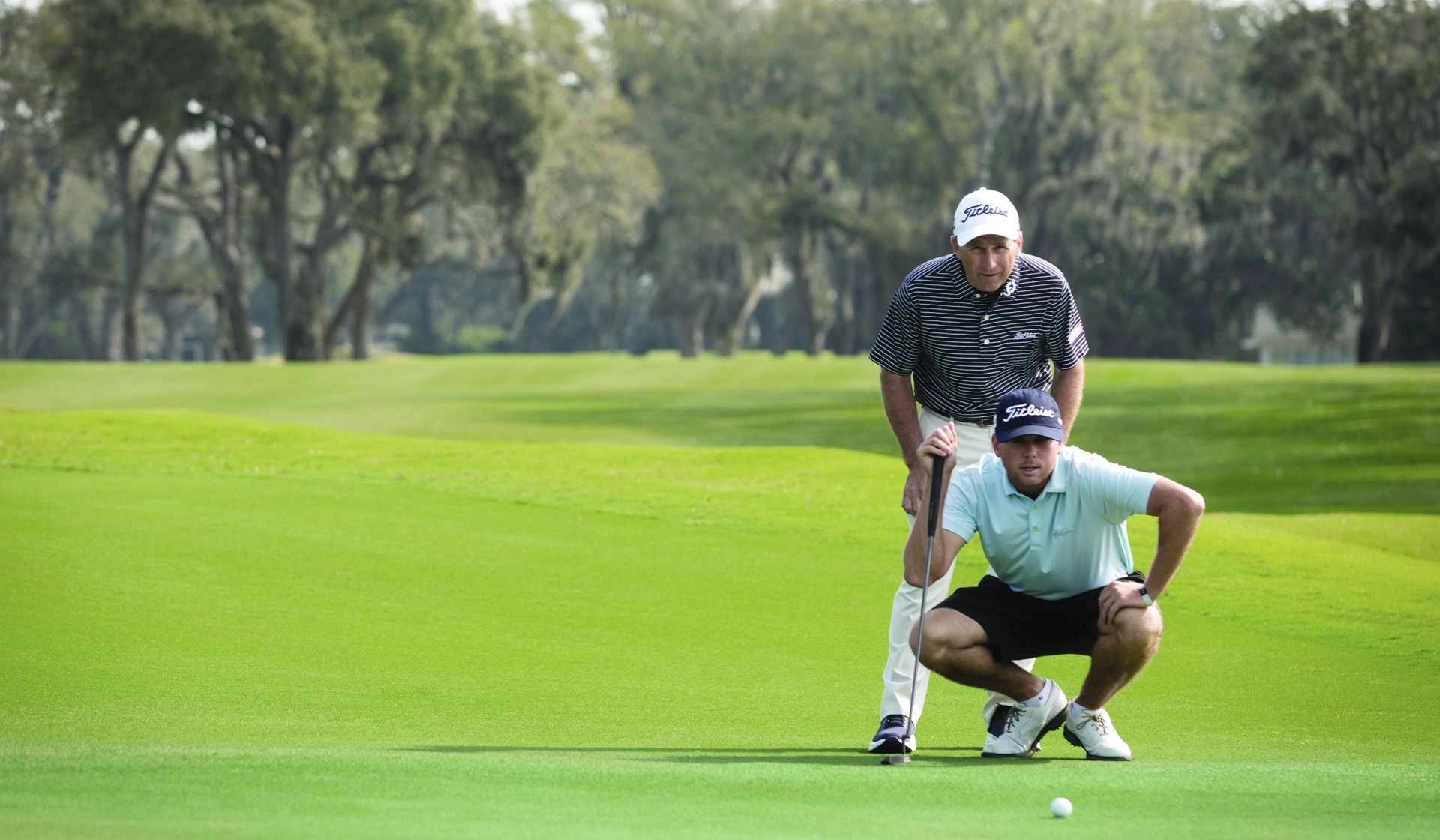The Mental Game of Golf
Follow these tips to create a game plan and manage your nerves on the course.
Golf is like the golden-haired sirens in Greek mythology who lured sailors with their beauty and singing. Just when you think it’s smooth sailing ahead and that you’re on track for a round to be proud of, you hit a drive out of bounds. Or miss a short putt. Or find yourself mentally drifting before you even load your clubs in the car.
Sea Island Golf Performance Center (GPC) Director Craig Allan says, “Golf should be fun, but for some, it can be stressful and intimidating. At the GPC, we see preparation as a key to reducing negativity and providing confidence. Our holistic approach allows our world-class team to prepare golfers in all areas, including technique, physical fitness, course management and mental approach. Many golfers focus only on the physical aspects and aren’t able to reach their potential because they fail to realize the importance of mental preparation and course management.”
Strategy is an important aspect of preparation, according to Daniel Gray, an elite instructor at the GPC who specializes in creating long-term performance programs for golfers. “One of the ways I help players develop confidence is showing them how to use Google Earth to measure distances, including the width of fairways, elevation from tee to green and green width and length,” he explains. “This gives them a starting point to create a strategy for each hole before they arrive at the course. During practice rounds, they can work realities and conditions into their game plan.”
In addition to this game plan, having a pre-shot routine is imperative, according to Dr. Morris “Mo” Pickens, sports psychologist at the GPC. Pickens has counseled top amateurs as well as PGA Tour pros such as Stewart Cink, Lucas Glover and Zach Johnson on mental preparedness. Whether it’s a round with friends, a member-guest tournament or the U.S. Open, any golfer wants to do his/her best, so an attack of nerves feels much the same. “Nerves are nerves,” Pickens says. “It’s going to happen even to the best players in the world. But being anxious or nervous is never the problem. The problem is not knowing how to deal with nerves.”
He points out the difference between social rounds and more serious competition: “During your weekly match with friends, you’re keeping score, but that card doesn’t have to be turned in to anyone. In serious matches, you’re expected to turn in a scorecard that will be posted for everyone to see. Just knowing that makes some people nervous.”
When you get nervous or anxious, slow down. “Most people walk too fast, breathe too fast, swing too fast and make decisions too fast,” Pickens notes. “So when nerves are heightened, go back to a predetermined process of thinking. Go back to the known — your pre-shot routine, your checklist before each shot. Don’t start winging it.”
Pickens shares that a good mental trick is to “focus on what you want to happen rather than what you don’t. If you think, ‘Don’t hit it in the water,’ then hitting it out of bounds on the other side of the fairway becomes acceptable. If you think, ‘Don’t leave it short,’ then a putt past the hole becomes OK. Your ‘self-talk’ has to be aware of the negative and substitute a positive process, something specific such as aiming at a tree across the water or focusing on the left center of the hole on the putt.”
Pickens points out that the irony of golf is that people who are accustomed to focusing on “process” rather than “result” in their work forget to apply the same principles in golf. “Going into surgery, surgeons are not focused on the result (a successful operation) but on the step-by-step process that will deliver a good outcome,” he says. “The best players have good mental choreography — a known and practiced process.”




